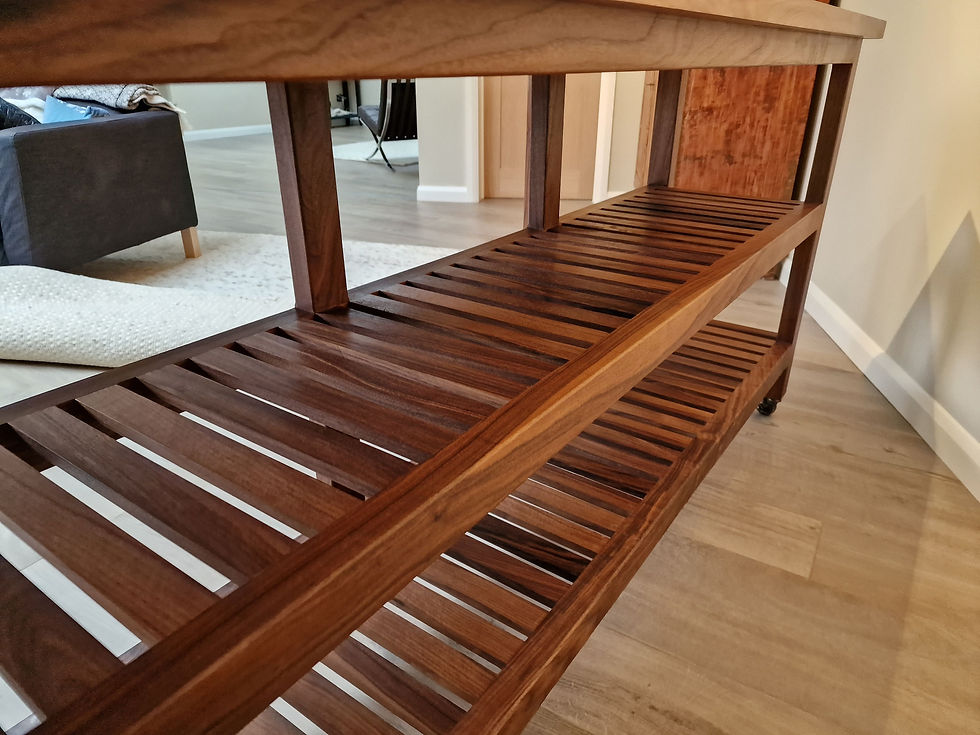What Timber is Best Used for Outdoor Furniture?
- Rich Moss

- Dec 8, 2023
- 2 min read
Crafting Timeless Pieces for the Great Outdoors
When it comes to outdoor furniture and crafting enduring pieces for outdoor spaces, there are a number of key factors to consider.
Understanding the Great Outdoors

Before selecting your timber, it's crucial to consider the unique challenges outdoor furniture faces. Predictably, outdoor furniture contends with all elements of weather, from scorching sun to relentless rain. Therefore, the choice of timber becomes a critical decision, influencing not only the aesthetics but also the longevity of your furniture.
Timeless Teak: Known for Its Resilience and Aesthetic Appeal
Among the options available, teak emerges as a timeless choice for outdoor furniture. Renowned for its exceptional durability, teak has been a staple in the world of fine woodworking for centuries. Its natural oils make it resistant to water, insects, and rot, ensuring that outdoor furniture withstands the test of time.
Redwood: Aesthetic Elegance with Eco-Friendly Roots
For those who appreciate eco-friendly and sustainable options, redwood is one to consider. Sourced from imposing redwood trees, this timber is not only visually stunning but also resistant to decay and insects. Redwood's innate ability to resist warping and shrinking makes it an ideal choice for those seeking both aesthetics and environmental responsibility.
Cedar: Aromatic Beauty and Decay Resistance.
Cedar, with its distinctive fragrance, is another front-runner for outdoor furniture. Beyond its pleasant scent, cedar is revered for its natural resistance to decay and insects. This makes it an excellent choice for those seeking a timber that not only weathers the elements gracefully but also imparts a pleasant aroma to your outdoor space.
Ipe: Unparalleled Strength and Hardiness, but potentially a questionable choice.
Known as "Ironwood," Ipe boasts an impressive reputation for being one of the hardest and most durable timbers available. Originating from South America, Ipe's density and natural oils make it resistant to rot, decay, and insects. Its deep, rich hues add a touch of sophistication to outdoor spaces, making it a good choice for those who value both strength and aesthetics. Ipe wood is a sustainable wood thanks to the trees' carbon sequestration and carbon storage. However, it is vulnerable to overharvesting, illegal logging and is a tropical timber.
Acacia: Budget-Friendly Beauty. Balancing Affordability and Elegance
For those seeking a budget-friendly yet elegant option, fast growing and sustainable acacia is a compelling choice. Known for its warm hues and intricate grain patterns, acacia offers a balance between affordability and visual appeal. While it may require periodic maintenance, proper care ensures that your acacia outdoor furniture retains its beauty for years to come.
Maintenance Tips for Longevity: Preserving the Beauty of Your Outdoor Furniture
Regardless of the timber chosen, proper maintenance is crucial for preserving the beauty and integrity of your outdoor furniture. Regular cleaning, application of protective coatings, and strategic placement to minimise prolonged exposure to harsh weather are essential practices that can extend the life of your pieces.
So, whether you're envisioning a classic teak bench, a redwood dining set, or a cosy perfumed cedar nook I can help you bring your vision to life. Commissioning bespoke outdoor furniture is not just about acquiring functional pieces; it's about creating the perfect setting for your outdoor space.
If you would like to discuss a potential project please contact me at info@richmossfurniture.co.uk



